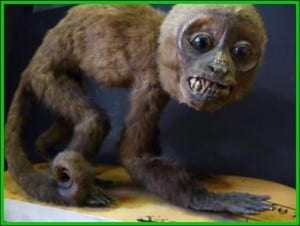Specimen of the Week: Week 160
By Jack Ashby, on 3 November 2014
 We all know that in this world of competing stimuli, an animal really needs to work hard to get people interested, achieve celebrity status in the media, and ultimately realise the dream that all animals hold – to star their own bank, crisps or cereal advert.
We all know that in this world of competing stimuli, an animal really needs to work hard to get people interested, achieve celebrity status in the media, and ultimately realise the dream that all animals hold – to star their own bank, crisps or cereal advert.
We trade in animal USPs every day… We talk about the biggest/smallest/rarest/fastest/ugliest/deadliest, and this is what gets aspiring animal stars into the And Finally… sections of the news.
The A-Team of animal superlatives is well established, and so today I am acting (for a commission) to promote the under-promoted of the animal world. This Australian marvel has a long list of “-est”s to its name.
This week’s Specimen of the Week is…
**The preserved Honey Possum**
1) The most remarkable thing about honey possums is that they give birth to the smallest baby of any mammal – a genuinely incredible FIVE MILLIGRAMS. That’s about a quarter the mass of a single grain of rice. Adult females weigh about eight grams.
Honey possums are Australian marsupials. Marsupials are mammals which give birth after a very short period of development in the womb, and do the bulk of their baby development on the teat (often in a pouch). This is contrast with most mammals (placentals), which do most of their growing in the womb, then finish it off on the teat with a short period of milk suckling. Honey possums obviously take the business of not doing much growing in the womb to the extreme.
A possum that eats honey
2) The naming of animals is rarely that imaginative (think starfish, sea lion, sea mouse etc), and honey possums are no exception. Honey possums are possums which eat honey. Or more accurately nectar. In fact, they are one of the only truly nectivorous mammals. They are well adapted for this – their long thin snout allows them to plunge themselves deep inside flowers. Their tongues are tipped with a brush-like structure to absorb the nectar. They have extremely long lower incisors which stick forward out of the jaw, presumably to channel the tongue into flowers (and it is these incisors which ally the honey possums to the Diprotodontids (literally “two forward teeth”) – the order of marsupials including kangaroos, wombats, koalas and possums).
Their aboriginal name is also one of the best: the noolbenger.
Monkey-footed marsupial
3) Honey possums are the only member of their family (Tarsipedidae). The family name Tarsipedidae means “feet like a tarsier”. Tarsiers are small primitive primates, and this name references the fact that, like primates but unlike most other mammals, honey possums don’t climb using claws. Instead they have nails and an opposable first digit to grip branches with. Their Latin name Tarsipes rostratus also alludes to this, with the rostratus bit highlighting their prominent snout.
Also like some primates, they have a prehensile tail which they can use to help in climbing.
Significant sperm
4) Despite the minute size of their babies, honey possums have the longest sperm of any mammal, a whopping one third of a millimetre. They also have giant testes, which represent around 5% of their body weight. This sort of investment in reproductive morphology is typical of species which are highly promiscuous (chimps are another example of this, which are ten time larger than humans, relative to body size).
A Land of Possumibilities
5) Honey possums are restricted to the far southwestern corner of Australia, where they live in the coastal sand plain heaths, feeding on a diverse range of plants (they need to live in places where at least one species is flowering at any given time), and they are largely crepuscular (active around dawn and dusk). Despite southwest Western Australia being rife with both cats and foxes, somehow honey possum populations are not suffering from these introduced predators, which have had dire consequences for so many other species. We so rarely say this, but honey possum populations are stable, and they are listed as Least Concern by the International Union for the Conservation of Nature.
Despite being common, they are tiny and secretive, and not easy to find. I was extremely lucky to find one when I was in the region taking part in a project to test a new poison method to control the cat populations.
Jack Ashby is the Manger of the Grant Museum of Zoology
References
Friend, T., Morris, K., Burbidge, A. & McKenzie, N. 2008. Tarsipes rostratus. The IUCN Red List of Threatened Species. Version 2014.2. <www.iucnredlist.org>. Downloaded on 28 October 2014.
Van Dyck S, Strahan R, editors. The Mammals of Australia. 3rd ed. Sydney (Australia): Reed New Holland
One Response to “Specimen of the Week: Week 160”
- 1
 Close
Close




[…] Last week, my colleague Jack Ashby wrote in effort to promote the under-promoted in the animal kingdom –the non-superstars that do not, at first glance, appear to be particularly special or worthy of fame and fortune. This week I would like to advance this theme by highlighting an animal that is often overlooked as not only a superstar but a veritable animal superhero. […]